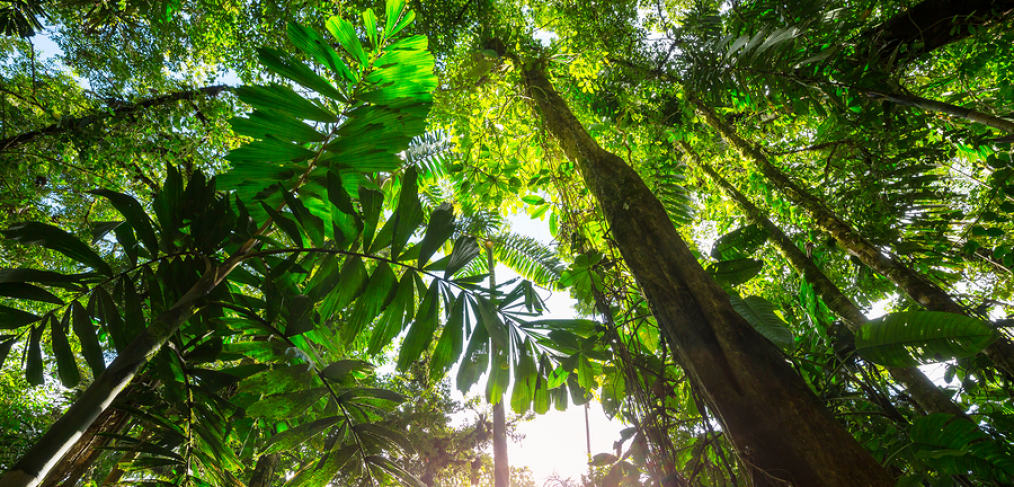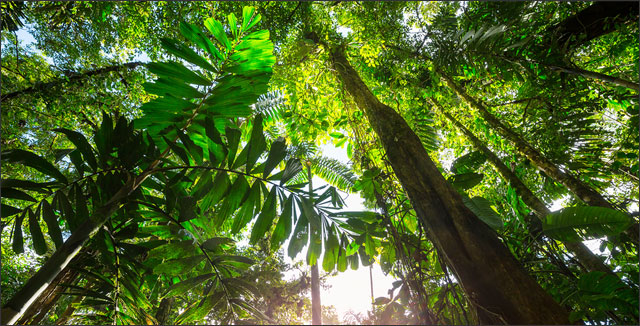
Sustainable Wood Harvesting: What You Need To Know

Are you thinking about building a deck this summer? How about patio furniture? Is there a teak set you’ve been eyeing for a long time? How about a pergola?
Do you know where that furniture comes from? Does all wood pretty much seem the same to you, or do you plan to use sustainable wood? What’s the difference?
There didn’t use to be a difference at all. The trees of our continents seemed like they would never run out. After all, they do grow back, don’t they? Loggers felled millions of trees every year, and it barely made an impression.
However, now it isn’t that simple. We have deforested so much of the world that conservation has become important if we want the human race to survive.
Did you know that only 8% of the world’s forests are currently being protected from deforestation? It’s not that governments don’t care, or that conservationists aren’t trying, it’s that our demand for wood is insatiable.
In addition, the money driving deforestation is more motivating than the law in many countries most impacted by this. For instance, your teak garden furniture may seem neutral, but does the company selling it know how the wood was harvested?
Brazilian Amazon rainforests are disappearing at an alarming rate. The disappearance of the rainforests is contributing to climate change. Homes of many threatened creatures have been destroyed, and the welfare of native tribes who depend on the forest is at risk.
You or I might not be able to stop Brazilian deforestation on our own. However, we can make our money count by refusing to buy anything but sustainable wood.
Sustainable Wood Harvesting
What is sustainable harvested wood? Sustainable wood harvesting is managed forest land where forest stewards work on managing the harvest so it doesn’t damage the eco-system where the wood is harvested. They study watersheds, wildlife habitats, and the health of the trees themselves to make sure trees are cut down in a way so that a healthy forest will grow back in its place.
This long-term way of harvesting means the forest will still be there for generations to come, sheltering indigenous wildlife, The controlled harvest will not contribute to global warming.
As you might imagine, wood that is just taken often leaves a previously forested area bare and vulnerable where it was protected before. Often, these eco-systems will never recover – particularly in the case of rainforest deforestation.
Unsustainable Woods
Here’s an excerpt from the Rainforest Relief website that is horrifying:
“The US is the largest importer of tropical hardwoods. Much of it is high-value lumber, such as mahogany (South American and African), ipę (“Brazilian walnut”), Jatoba (“Brazilian cherry”), ramin and nyatoh, used for furniture, doors, coffins, boardwalks, decking, plywood, and flooring. Vast volumes are imported as inexpensive plywood (called lauan) from southeast Asian rainforests, used for paneling, cabinets and furniture interiors and backing, set construction, tractor trailers, subflooring and doorskins. Still more comes in as marine grade plywood made with okoumé and African mahogany, used in boat building and for the flooring of trucks and shipping containers. Rainforest wood is so ubiquitous that it’s even found in bathroom plunger handles and pencils.”
Surely, we can find a better source for our plunger handles and pencils than rainforest wood. Here are some of the worst woods to buy, environmentally. You can see a full list, kept by the United Nations.
- Mahogany – South American and African
- Burmese Teak, and Teak in general
- Ebony
- Ipe
- Jatoba
- Ramin
- Nyatoh
- Murbau
- Sapelee
- Wenge
How to Find and Use Sustainable Wood
The timber we use for our projects is classified as hardwood or softwood. Hardwoods come from trees like beech and oak. Softwood comes from conifers like pine and fir.
Softwood trees are more sustainable than hardwood because they grow faster. Therefore, hardwood forests must be managed much more carefully, as trees like oak are very slow growing.
The European Union has adopted strict policies to protect its forests. So much so that more trees are planted in the EU than are cut down. Wood from the EU tends to be reliably sustainably harvested. However, you should still look for an FSC certification.
The Forest Stewardship Council
The Forest Stewardship Council (FSC) is a non-profit in charge of responsibly managing the world’s trees. The certification system is internationally recognized and sets the standard for anyone wanting to support responsible forestry. Their logo will only be found on woods that are sustainably harvested.
Sustainable Woods
Bamboo
Not all sustainable woods are FSC certified. For instance, bamboo is a sustainable wood but isn’t FSC certified. It grows rapidly, and it grows in a lot of places. But you have to be careful. Some types of bamboo are threatened, and a staggering billion people rely on this wood for their livelihood. As well as two kinds of endangered animals: giant pandas and African mountain gorillas.
The International Network for Bamboo and Rattan website should shed more light on how to find sustainably sourced bamboo.
Teak
While the use of teak wood is unsustainable and contributing to rainforest deforestation, there are alternatives. Most true teak comes from Burma and is exported illegally. African teak is almost nonexistent.
There is FSC certified teak, as well as several alternatives: FSC favinha, guariuba, tatajuba, and eucalyptus. Eucalyptus is especially good for its rapid growth. Retail chains like West Elm are selling FSC certified eucalyptus outdoor furniture.
Oak
Oak wood is very readily available from FSC sources throughout Britain, Europe, and North America. Unsustainable practices are still common for oak coming from Poland, Russia, and Ukraine as well as France, Estonia, Spain, and Portugal. Reclaimed and recycled oak is extremely popular right now.
Here’s a Country Living article all about how to source reclaimed wood. If you are interested in creating projects with reclaimed wood, please see Reclaimed Wood for Beginners: Creative Possibilities.
Douglas Fir
Ironically, Douglas Fir from North America – where it is plentiful – is still mostly irresponsibly done, both in the United States and Canada. The best thing to do is refuse to buy it from these sources and find FSC Douglas Fir – used for building, paneling, and furniture. The FSC Database can be used to find sources for all FSC woods you are looking for in the United States.
Conclusion
Sustainable wood harvesting can be a solution. It is also possible to either contribute to the tragedy of deforestation or to combat it with your personal spending choices. If you can take a little bit of extra time to research your wood products and lumber before you buy them, you can contribute your share to keeping our planet safe for your children and grandchildren.

